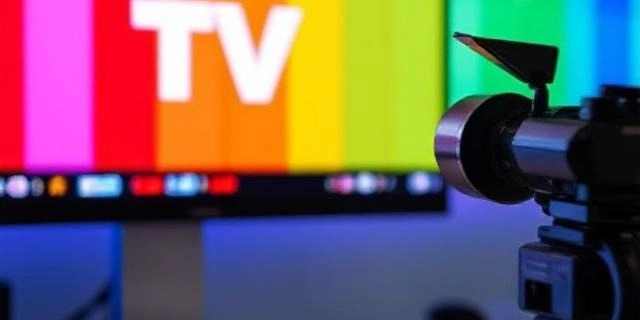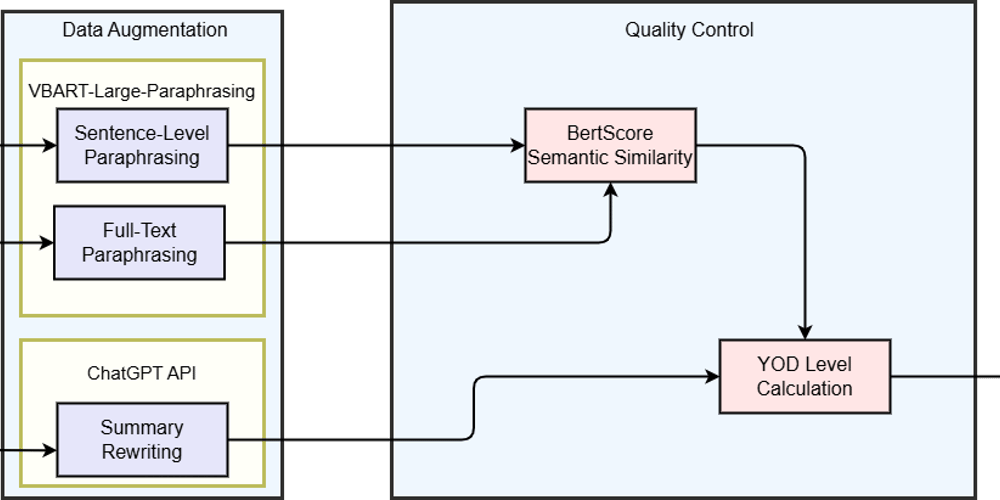How TV Scheduling Software Improves Workflow for Broadcasters
Introduction Broadcasting isn't just about pressing "play" — it's about precise timing, efficient planning, and delivering the right content to the right audience at the right time. Whether you're running a TV station, managing a FAST channel, or operating an OTT platform, TV scheduling software is the backbone of a smooth and professional workflow. Gone are the days of sticky notes and spreadsheets — it’s time to automate, streamline, and grow. What Is TV Scheduling Software? At its core, TV scheduling software helps broadcasters plan, organize, and automate content playback over time. It determines what content airs when — across hours, days, or weeks — while handling ad breaks, metadata, and last-minute changes like a breeze. There are several types: Live TV scheduling for traditional stations VOD scheduling for streaming platforms FAST scheduling for linear-style digital channels The magic? It brings structure to chaos. Key Benefits of TV Scheduling Software Time-Saving Automation No more manually arranging content blocks for each day. With recurring templates, pre-built playlists, and drag-and-drop interfaces, what used to take hours can now take minutes. Reduced Human Errors Missed time slots or ad placements can be costly. Scheduling software minimizes slip-ups by handling timing down to the second — and alerting you before something goes wrong. Streamlined Content Management Upload once, schedule everywhere. Most systems sync with your CMS and allow for easy tagging, grouping, and previewing of content — even across multiple channels. Seamless Integration with Broadcast Systems Modern tools work with playout automation, ad servers, and even EPG (Electronic Program Guide) providers — making it all one big, connected ecosystem. How Scheduling Software Transforms Broadcast Workflows Centralized Control of Programming View your full schedule on one screen. Whether you manage a single channel or twenty, you can easily schedule and edit content without switching platforms. Real-Time Updates and Flexibility Need to swap out a program last-minute? Scheduling tools let you make real-time changes without disrupting the entire lineup. Coordinating Ad Breaks and Commercial Inserts Map out ad breaks precisely — and connect with ad servers or SSAI platforms for dynamic ad insertion. More control, more revenue. Managing Multiple Channels Simultaneously Operate like a media giant. Most TV scheduling software lets you clone schedules, share content libraries, and monitor multiple channels at once. Features to Look for in TV Scheduling Tools Drag-and-Drop Timeline: Makes planning intuitive and fast. Playlist Recurrence: Reuse popular programming blocks. EPG Integration: Sync with electronic program guides to display accurate listings. Metadata Management: Tag content for searchability and compliance. Rules & Automation Triggers: Auto-fill time slots or rerun content during downtime. How Scheduling Software Supports Different Broadcast Models Linear TV Stations Perfect for traditional broadcasters who require exact air times, commercial timing, and regulatory compliance. FAST Channels FAST scheduling thrives on automation. You can line up ad-supported content 24/7 and rotate playlists with ease. OTT & VOD Platforms Some platforms use scheduling tools for featured carousels or event-based programming like premieres or themed weekends. Case Studies of Broadcasters Using Scheduling Software National News Network Streamlining Operations A national broadcaster reduced programming errors by 85% using dynamic schedule validation. Indie Channel Scaling Up with Automation A small content creator running a lifestyle FAST channel saw a 5x growth in output by switching from spreadsheets to cloud-based scheduling. Sports Network Managing Live Events Live sports are unpredictable. One network uses software to automatically adjust surrounding programs when matches run long or get canceled. Challenges Without Scheduling Software Manual Errors: One slip can lead to dead air or a missed program. Disorganized Teams: Without centralized tools, teams work in silos. Hard to Scale: Adding new channels or expanding globally becomes a nightmare without automation. Integration with Other Broadcast Systems TV scheduling tools don't work in isolation. They sync with: Playout Automation Systems (like Harmonic, Cinegy) Ad Insertion Platforms (like Google Ad Manager, Freewheel) EPG Providers (to display schedules on OTT apps and smart TVs) The Future of TV Scheduling The next generation of tools is: AI-powered: Suggesting schedules based on viewer behavior. Cloud-native: Accessible from anywhere. Personalized: Offering different schedules to different audiences. TV scheduling is becoming smarter, faster, and more strategic. Choosing the Right Scheduling Software Ask yourself: What kind of c

Introduction
Broadcasting isn't just about pressing "play" — it's about precise timing, efficient planning, and delivering the right content to the right audience at the right time. Whether you're running a TV station, managing a FAST channel, or operating an OTT platform, TV scheduling software is the backbone of a smooth and professional workflow. Gone are the days of sticky notes and spreadsheets — it’s time to automate, streamline, and grow.
What Is TV Scheduling Software?
At its core, TV scheduling software helps broadcasters plan, organize, and automate content playback over time. It determines what content airs when — across hours, days, or weeks — while handling ad breaks, metadata, and last-minute changes like a breeze.
There are several types:
Live TV scheduling for traditional stations
VOD scheduling for streaming platforms
FAST scheduling for linear-style digital channels
The magic? It brings structure to chaos.
Key Benefits of TV Scheduling Software
Time-Saving Automation
No more manually arranging content blocks for each day. With recurring templates, pre-built playlists, and drag-and-drop interfaces, what used to take hours can now take minutes.Reduced Human Errors
Missed time slots or ad placements can be costly. Scheduling software minimizes slip-ups by handling timing down to the second — and alerting you before something goes wrong.Streamlined Content Management
Upload once, schedule everywhere. Most systems sync with your CMS and allow for easy tagging, grouping, and previewing of content — even across multiple channels.Seamless Integration with Broadcast Systems
Modern tools work with playout automation, ad servers, and even EPG (Electronic Program Guide) providers — making it all one big, connected ecosystem.
How Scheduling Software Transforms Broadcast Workflows
Centralized Control of Programming
View your full schedule on one screen. Whether you manage a single channel or twenty, you can easily schedule and edit content without switching platforms.Real-Time Updates and Flexibility
Need to swap out a program last-minute? Scheduling tools let you make real-time changes without disrupting the entire lineup.
Coordinating Ad Breaks and Commercial Inserts
Map out ad breaks precisely — and connect with ad servers or SSAI platforms for dynamic ad insertion. More control, more revenue.
- Managing Multiple Channels Simultaneously Operate like a media giant. Most TV scheduling software lets you clone schedules, share content libraries, and monitor multiple channels at once.
Features to Look for in TV Scheduling Tools
Drag-and-Drop Timeline: Makes planning intuitive and fast.
Playlist Recurrence: Reuse popular programming blocks.
EPG Integration: Sync with electronic program guides to display accurate listings.
Metadata Management: Tag content for searchability and compliance.
Rules & Automation Triggers: Auto-fill time slots or rerun content during downtime.
How Scheduling Software Supports Different Broadcast Models
Linear TV Stations
Perfect for traditional broadcasters who require exact air times, commercial timing, and regulatory compliance.FAST Channels
FAST scheduling thrives on automation. You can line up ad-supported content 24/7 and rotate playlists with ease.OTT & VOD Platforms
Some platforms use scheduling tools for featured carousels or event-based programming like premieres or themed weekends.
Case Studies of Broadcasters Using Scheduling Software
National News Network Streamlining Operations
A national broadcaster reduced programming errors by 85% using dynamic schedule validation.Indie Channel Scaling Up with Automation
A small content creator running a lifestyle FAST channel saw a 5x growth in output by switching from spreadsheets to cloud-based scheduling.Sports Network Managing Live Events
Live sports are unpredictable. One network uses software to automatically adjust surrounding programs when matches run long or get canceled.
Challenges Without Scheduling Software
Manual Errors: One slip can lead to dead air or a missed program.
Disorganized Teams: Without centralized tools, teams work in silos.
Hard to Scale: Adding new channels or expanding globally becomes a nightmare without automation.
Integration with Other Broadcast Systems
TV scheduling tools don't work in isolation. They sync with:
Playout Automation Systems (like Harmonic, Cinegy)
Ad Insertion Platforms (like Google Ad Manager, Freewheel)
EPG Providers (to display schedules on OTT apps and smart TVs)
The Future of TV Scheduling
The next generation of tools is:
AI-powered: Suggesting schedules based on viewer behavior.
Cloud-native: Accessible from anywhere.
Personalized: Offering different schedules to different audiences.
TV scheduling is becoming smarter, faster, and more strategic.
Choosing the Right Scheduling Software
Ask yourself:
What kind of channel(s) am I running?
Do I need ad integration, EPG sync, or real-time playout?
What’s my budget and technical expertise?
Look for tools that grow with you — many offer scalable plans and user training.
Conclusion
If you're still using spreadsheets or basic tools to schedule your programming, it’s time to upgrade. TV scheduling software isn’t just a nice-to-have — it’s essential for staying competitive in a fast-paced, always-on broadcasting world. From saving time and reducing errors to unlocking new monetization channels, it transforms how you manage and deliver content. Whether you're running a traditional station or a modern FAST channel, the right software can be your biggest ally.











































































































































































![[The AI Show Episode 142]: ChatGPT’s New Image Generator, Studio Ghibli Craze and Backlash, Gemini 2.5, OpenAI Academy, 4o Updates, Vibe Marketing & xAI Acquires X](https://www.marketingaiinstitute.com/hubfs/ep%20142%20cover.png)




























































































































![[DEALS] The Premium Learn to Code Certification Bundle (97% off) & Other Deals Up To 98% Off – Offers End Soon!](https://www.javacodegeeks.com/wp-content/uploads/2012/12/jcg-logo.jpg)


![From drop-out to software architect with Jason Lengstorf [Podcast #167]](https://cdn.hashnode.com/res/hashnode/image/upload/v1743796461357/f3d19cd7-e6f5-4d7c-8bfc-eb974bc8da68.png?#)








































































































.png?#)

































_Christophe_Coat_Alamy.jpg?#)
 (1).webp?#)





































































































![Apple Considers Delaying Smart Home Hub Until 2026 [Gurman]](https://www.iclarified.com/images/news/96946/96946/96946-640.jpg)
![iPhone 17 Pro Won't Feature Two-Toned Back [Gurman]](https://www.iclarified.com/images/news/96944/96944/96944-640.jpg)
![Tariffs Threaten Apple's $999 iPhone Price Point in the U.S. [Gurman]](https://www.iclarified.com/images/news/96943/96943/96943-640.jpg)




































































































































